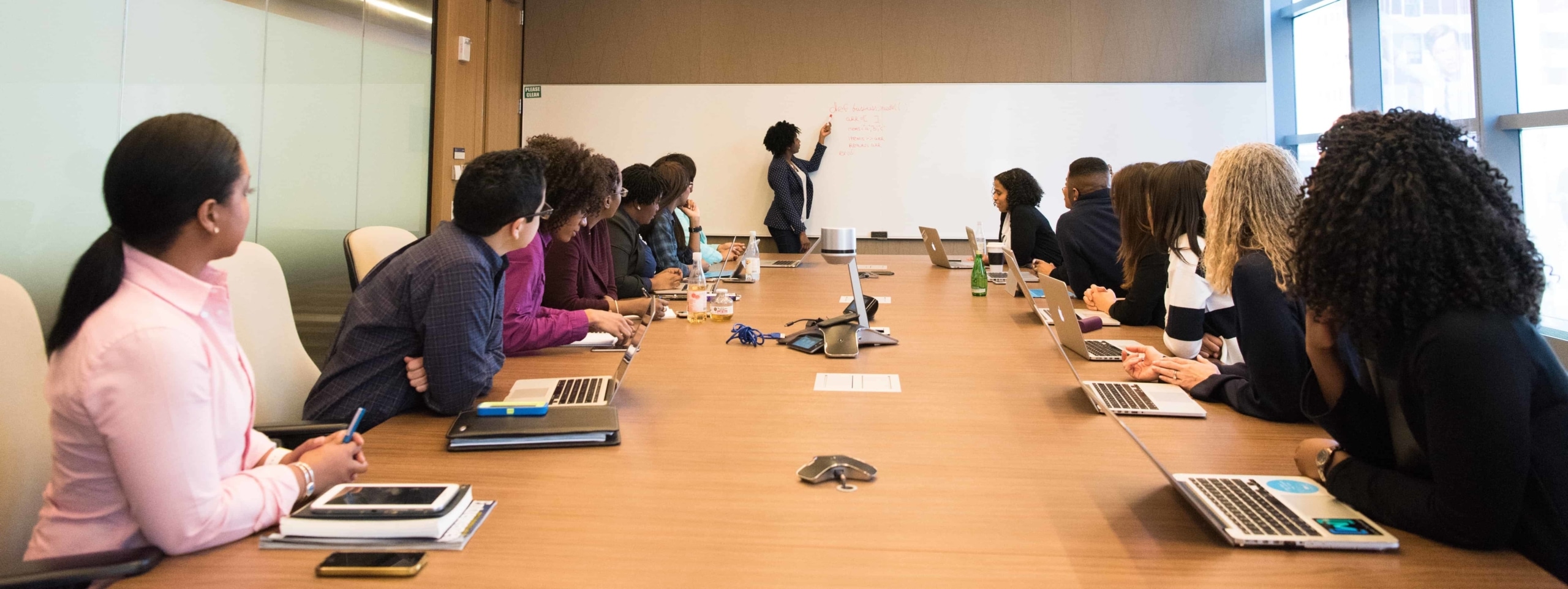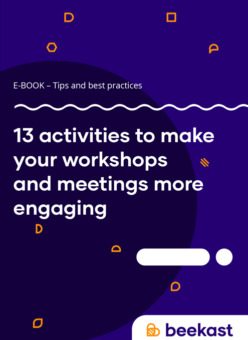A recent study by Barco and Circle Research found that managers attend an average of 10 meetings a week* — each about 48 minutes long. That’s 2 days a week spent on meetings. To make profitable use of this time, here are a few tips for optimising your approach to meetings.
Organising a work meeting
To ensure that work meetings run efficiently and that no one in a meeting feels like they’re wasting their time, advance preparation is essential. But how should you go about organising and preparing for a meeting? Here are a few helpful ideas to get you started.
Ask yourself these questions before organising a meeting
- Why do we need to have a meeting?
This question relates to the goal of the meeting: sharing information, taking decisions, checking in on progress, generating new ideas… What is the purpose of the meeting I want to organise?
- Do multiple people really need to get involved in this issue?
Time is a valuable commodity. Sometimes, an email is sufficient to share a piece of information with a few people or to get their opinions.
- Who needs to attend?
The participants should all have a direct role in the subject of the meeting. There’s no point in having too many people around the table. It’s better to choose attendees carefully based on their role in the company and their personality.
Identify the type of meeting
Each type of meeting has its own objectives. Before starting, identifying what type of meeting you want to organise is a key step in preparing for it properly.
- Information meeting
This type of meeting takes a mostly top-down approach, and is used to share information and pass messages along to the participants. Its structure involves a meeting leader presenting information to an audience.
- Project meeting
Kick-off meetings, team meetings, project reviews, problem-solving and project management meetings: These types of discussions bring project stakeholders together at each strategic stage of the project.
- Decision-making meeting
This strategic meeting type brings together people who need to take decisions to move a situation forward.
- Creativity meeting
Aimed at generating new ideas, this meeting type draws on techniques like brainstorming to get participants’ creative juices flowing.
- Managerial meeting
From onboarding to one-on-one meetings, managerial meetings give managers the tools they need to help their teams succeed.
Preparing for the work meeting
To make sure that your meeting runs smoothly, you need to prepare for it. Especially when the goal is to draw on your team’s collective intelligence. But what’s involved in preparing for a work meeting? Here are the most essential prerequisites.
- Remember the goal of the meeting
Everything else depends on this: a meeting needs a well-defined goal. It acts as a guideline and a common thread, and helps you to identify the resources needed to accomplish your goal. Participant, meeting length, required documents… it’s all built around the goal you set for the meeting.
- Set the agenda
The meeting agenda provides a plan and a list of topics to be discussed over the course of the meeting, ordered by priority. A good agenda is divided into subcategories, and should be succinct and realistic. If it’s too long, you may be better off organising additional meetings.
- Choose an appropriate location
Don’t forget to reserve the most appropriate meeting room for the number of participants, materials and equipment you’ll need (video projector, television, webcam, microphones, etc.). And to get off the beaten path a bit, consider organising meetings at locations outside of the company to help participants “think outside the box”.
- Designate a timekeeper
Announcing a pre-determined meeting length and sticking to it helps to keep people focused on the agenda. So it’s important to set an end time for your meeting. To make sure you finish on time, assign one of the participants to be the designated timekeeper.
- Plan the meeting in advance
Is there anything worse than finding out about a meeting two minutes before it starts? It’s important to invite participants well in advance, taking everyone’s availability into account and clearly specifying the goals of the meeting. This will help the group to prepare for the discussion.
- Documents and meeting materials
A slide deck, a white board, sticky notes, a web platform… What materials and documents does the group need?
Leading a work meeting
No matter how well-prepared a meeting is, its success is ultimately up to the meeting leader. Anyone can lead a meeting, as long as they keep a few key requirements in mind.

The meeting leader’s role
The meeting leader’s role is to guide the meeting and ensure that its stated goals are met. As the leader of the discussion, they move the conversation forward based on the agenda, giving everyone a chance to speak.
More generally, the meeting leader should be expected to:
- Remind participants of the purpose of the meeting, at the beginning and whenever necessary
- Establish rules ahead of time and set the tone: meeting length, collaboration methods, who gets to speak and when, etc.
- Keep the group focused by managing speakers’ turns and refocusing the discussion on the main meeting topic if it gets off track
- Generate collective intelligence by encouraging participants to produce value whenever possible
In addition to these roles, meeting leaders should have good leadership and people skills. They must know how to listen, give people the floor to encourage discussion, take on responsibilities and exert authority. These qualities are essential for effective meetings that give everyone a chance to participate.
Techniques for meeting leaders
Meeting leaders can use different techniques and even games to get the team working together effectively. Here are a few original ideas for encouraging participation in meetings.
- Give your meeting a boost with Pecha Kucha: This technique, which originated in Japan, can be used in a top-down meeting. The meeting leader presents 20 slides for just 20 seconds each, adding a boost of energy to their presentation.
- The person with 6 personalities: This meeting concept asks participants to change personalities, one after another, to help generate new ideas.
- Weather report: An icebreaker to loosen up the atmosphere before starting a meeting
- Stand-up meetings for increased efficiency: The idea here is that all meeting participants are standing up. They remain standing as they discuss the meeting topics, encouraging discussion and keeping meetings efficient.
- Walking meetings: This technique is not only a good way for participants to clear their minds, it also helps in staying focused on what’s essential and making meetings more efficient.
Concluding a work meeting
Everyone appreciates a good ending! Bringing your meeting to a timely conclusion helps make later meetings more effective.
A work meeting can wind up when all the different topics have been covered, decisions have been taken, and an action plan has been established. It’s also important not to go (too far) over the originally scheduled time.
Using an agile ROTI review or a ‘feedback door’ lets you get qualitative feedback from participants and adjust your approach in subsequent meetings.
Finally, writing meeting minutes is a good way to archive the discussions and give everyone access to the action plan.
We hope that the information in this post will give you the tools you need to avoid ‘meeting overload’, and to ensure that the time your team spends in meetings is pleasant and effective for everyone!
* According to a study conducted by Barco and Circle Research in November 2018 with 3000 managers in 8 countries.

